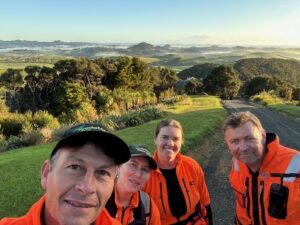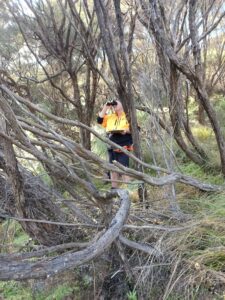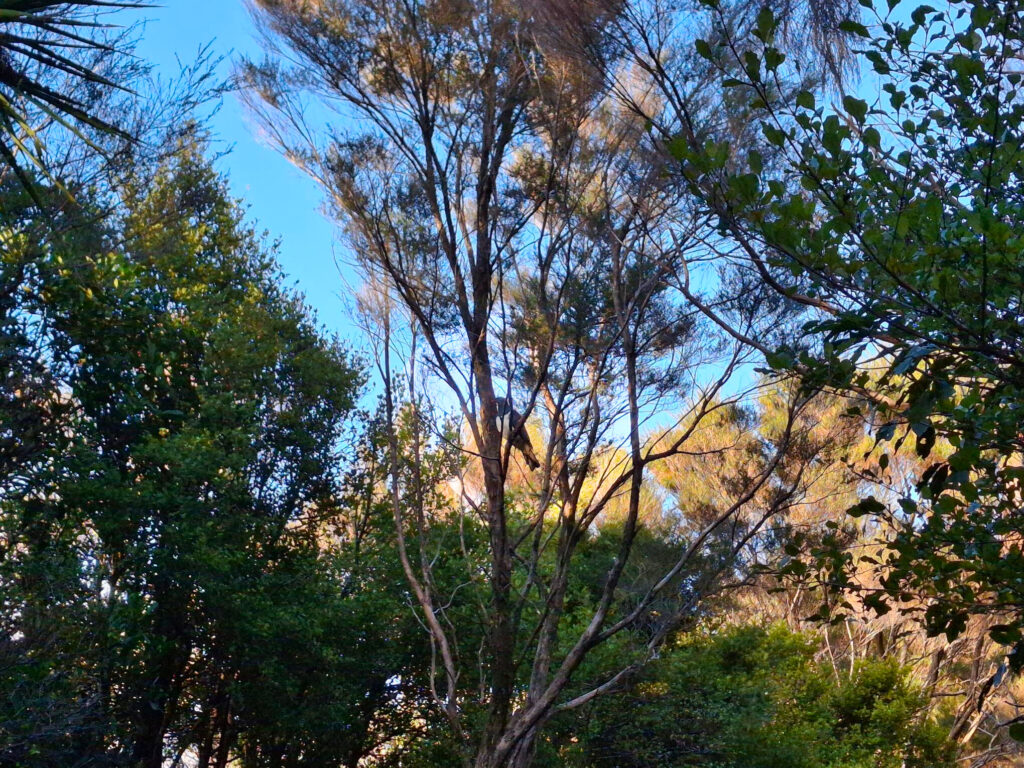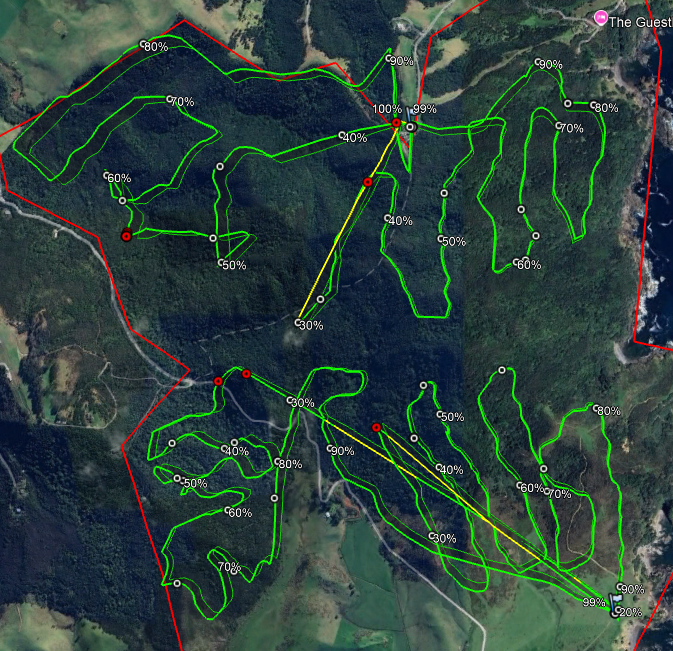Pre-operation monitoring at Kauri Mountain

It’s always a thrill to start working on a new area, and it was particularly exciting being able to do some preliminary monitoring in the Kauri Mountain area – a well-known possum hotspot – to gather some baseline data before the start of our operations in early June.
“This is an interesting area to monitor as previous pest control has not been extensive in the past, and it’s one of the main sources for possum reincursion into our wider project area”, comments our Project Manager, Oliver Hopwood. It is also a high value location to mana whenua and a sensitive environment, threatened by kauri dieback.
There are many monitoring techniques, but basically, they focus either on outcomes or results. Outcome monitoring in the pest control space monitors what we want to preserve – presence and abundance of birds, trees and other taonga species – while results monitoring aims to measure what we want to get rid of – the invasive predators.

5-Minute Bird Count

We started with a 5-Minute Bird Count (5MBC) exercise to help us measure the presence of birdlife in the area. Over the course of two days, almost our whole team, including some of our office staff, were split into 5 pairs to cover 100 sites of bird watching and listening. We’d stop for 5 minutes at each site to observe the bird presence. All birds spotted or heard were then recorded on tallies which were combined in the end to provide a final count.
“We chose to do a 5MBC because it has been used throughout Aotearoa New Zealand since 1975. This means we can compare our data to a huge dataset and contribute to this larger dataset ourselves. It is also a straightforward method and is done in a small amount of time compared to other monitoring methods”, explains our Biosecurity Officer Riley Edwards, who led the 5MBC exercise. “Birds are a great indicator of pressure from predation, revealing the positive impacts of pest control quicker than studies of vegetative growth”, she explains.
We’ve spotted many incredible manu (birds), like kūkupa (wooden pigeon) and miromiro (tomtit), but one of the highlights was spotting tītitipounamu (rifleman) which is rare in the region. “This first count showed a higher level of diversity than originally expected”.
The goal is to repeat it every six months to help draw a broader picture of the impact our pest control operations have on birdlife. “It’s awesome to think diversity and abundance will only improve from here”, celebrates Riley.

Possum spotting with thermal drone
We also did thermal drone monitoring over Kauri Mountain Reserve to measure the presence of possums. Equipped with thermal cameras that detect heat emitted by animals, these drones allow us to scan large areas for possums in the canopy of trees.
We detected 22 possums in the canopies, which indicates a sizeable population given it represents a ‘snapshot’ of individuals at the top of the canopy within a limited time window. While we can’t be precise on the actual total number, it shows that possums are present, and being evenly spread would indicate their numbers are consistent across the whole habitat and not restricted to small areas.

“Thermal drone captures a unique perspective that no other tool can provide. It allows us to capture a ‘before’ picture to measure against an ‘after’ one. It could also tell us where we might need to focus operations”, adds Oliver. This produces replicable snapshots that provide a good indication of the effectiveness of our operations over time. For best outcomes, we will aim to repeat this survey after the operation, in as close to the same conditions as possible, and compare results.

We’ve been incorporating learnings from mātauranga Māori – Māori knowledge – into our possum elimination project to diversify our approach and improve outcomes. This ancestral knowledge base has great evidence of the impact of the moon cycles on te taiao (the natural world) and all living things. “As part of our journey into mātauranga Māori, we chose the night for this operation using the Maramataka – Māori lunar calendar – to hopefully optimise for maximum animal movement and activity”, he adds. This drone survey took place on Tangaroa-ā-roto during the month of Haratua (May) which was a high energy day, when there’s normally more activity in the ngahere (forest) – the 22 possums we spotted in the canopies support that.
21/07/2025